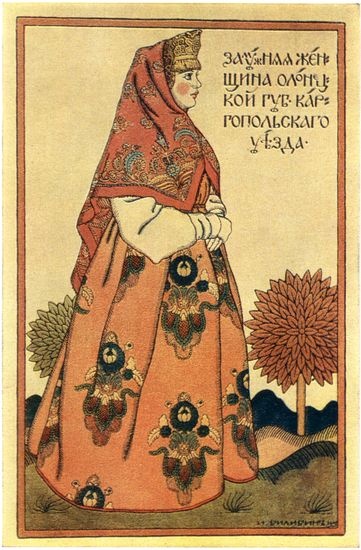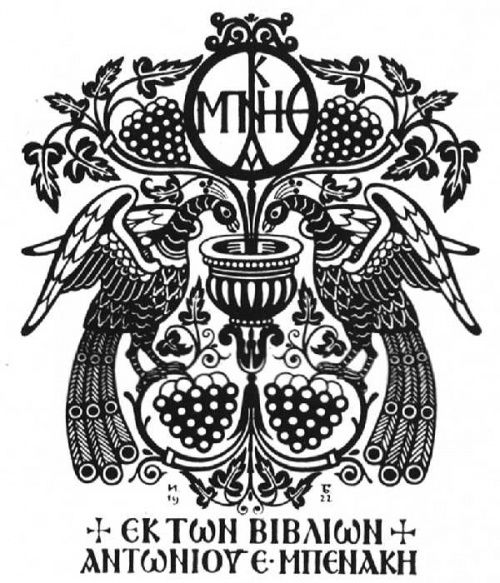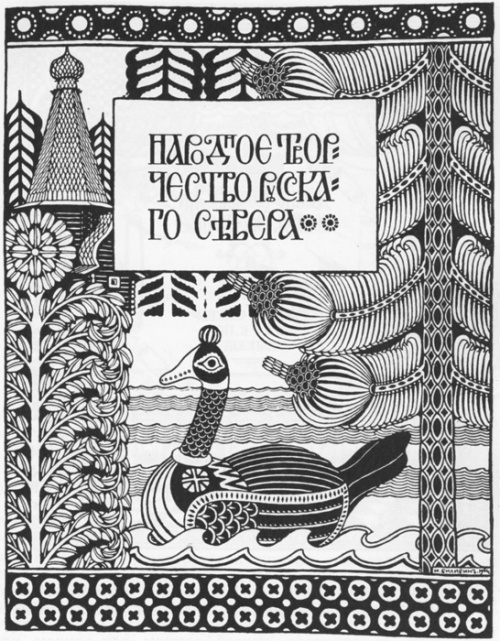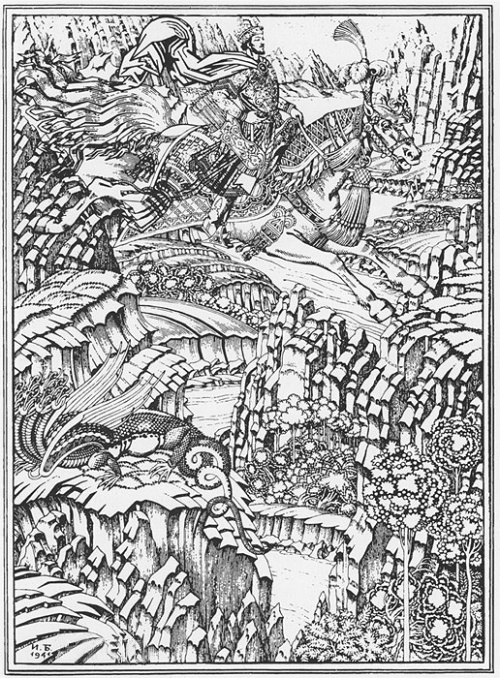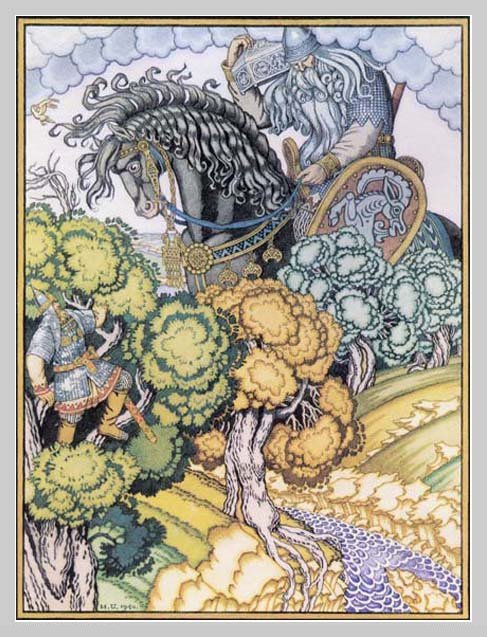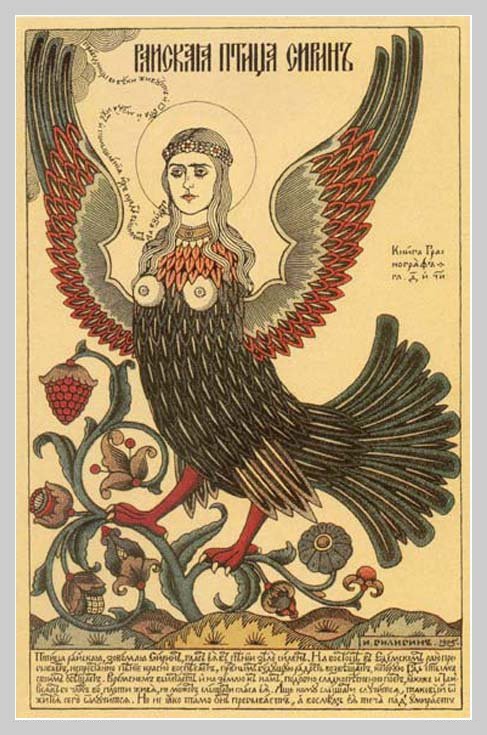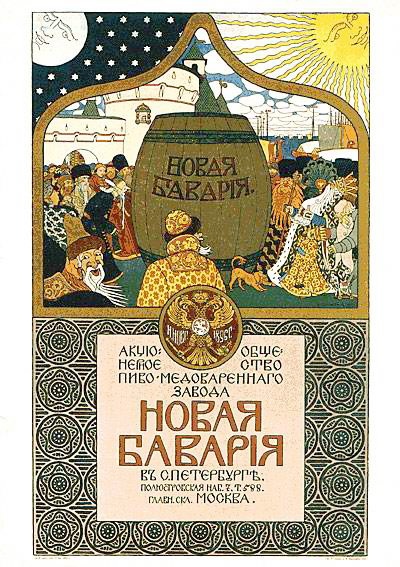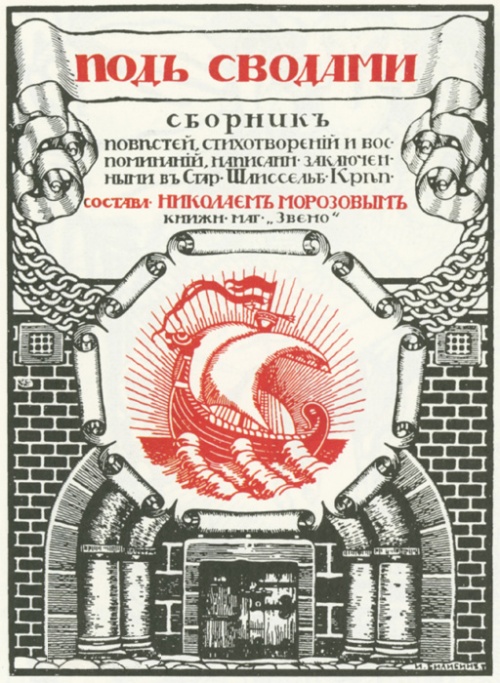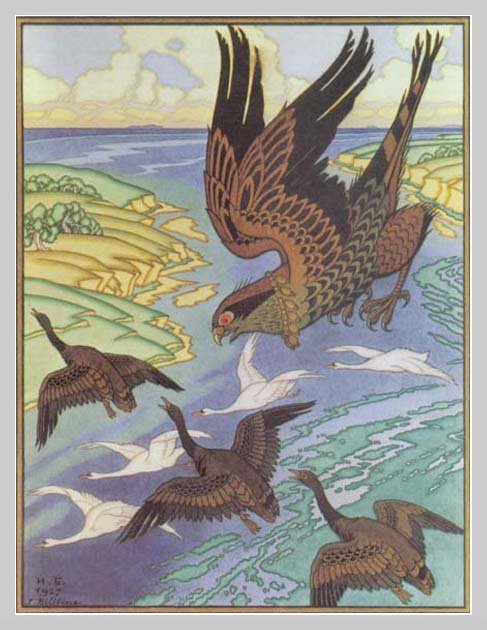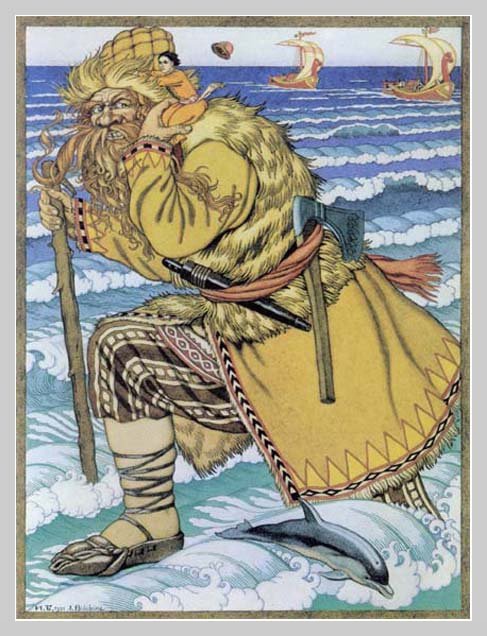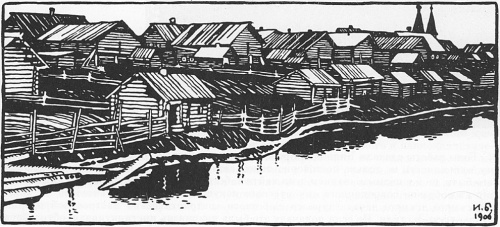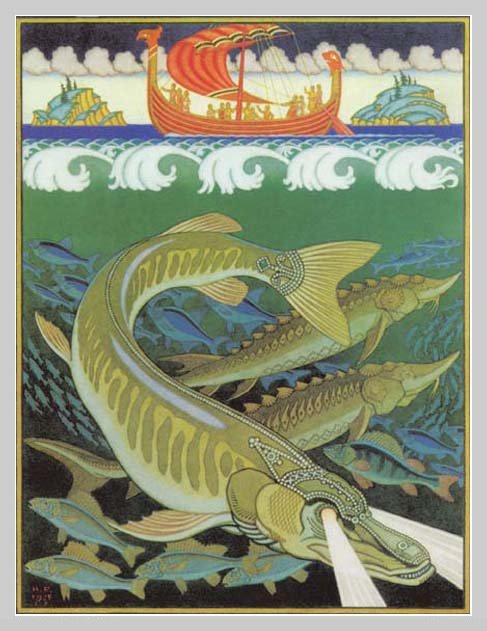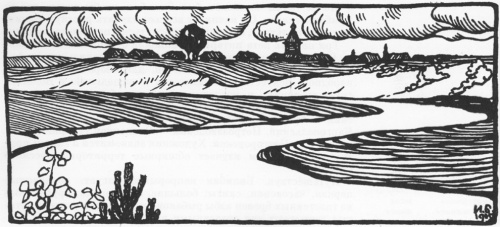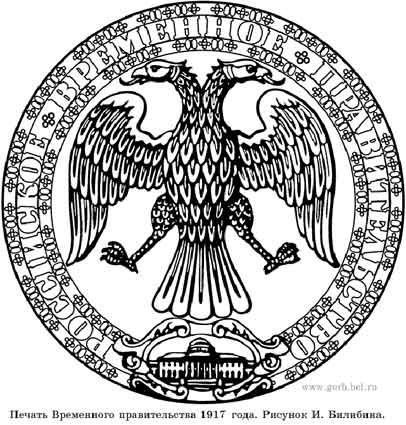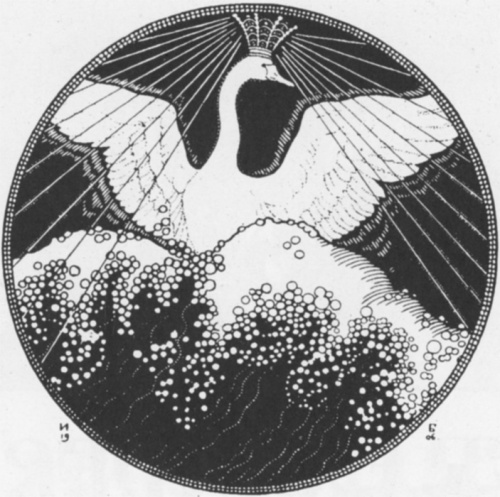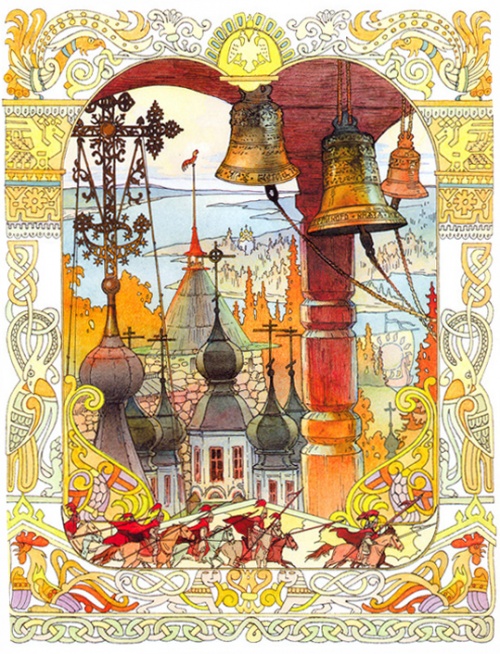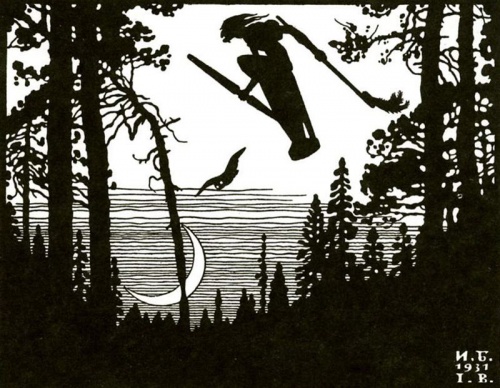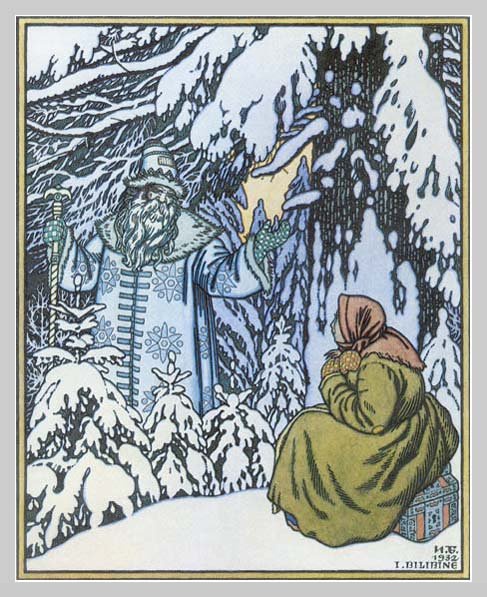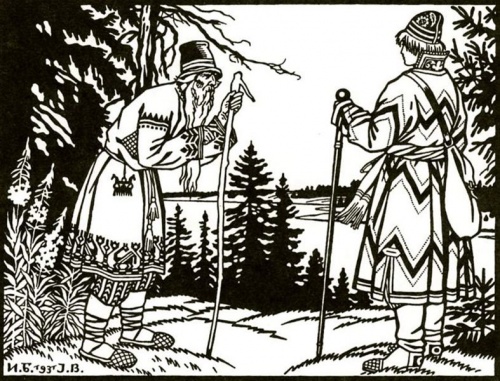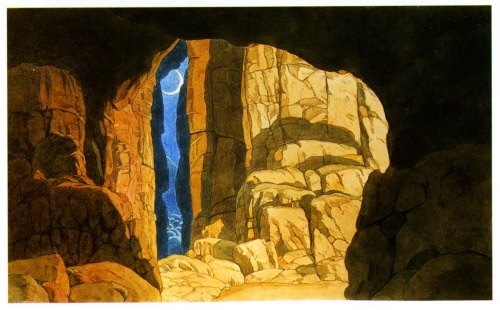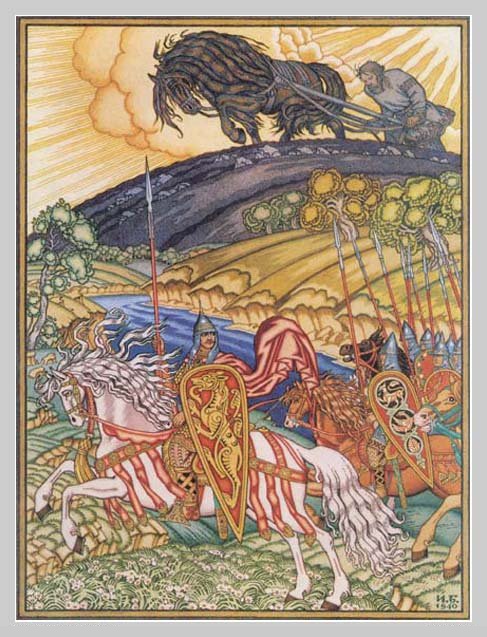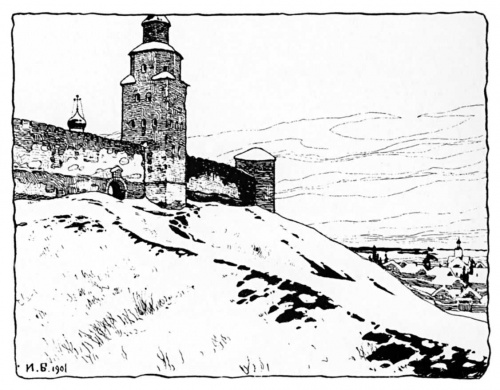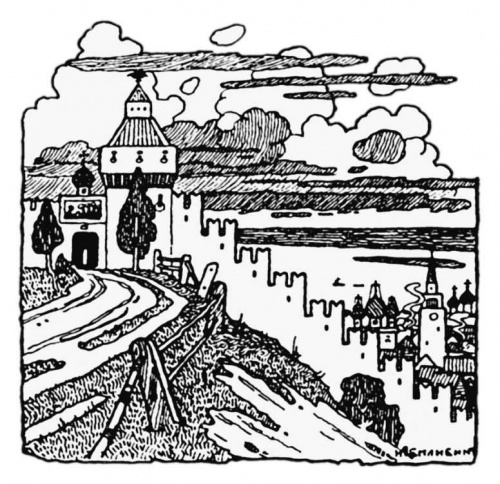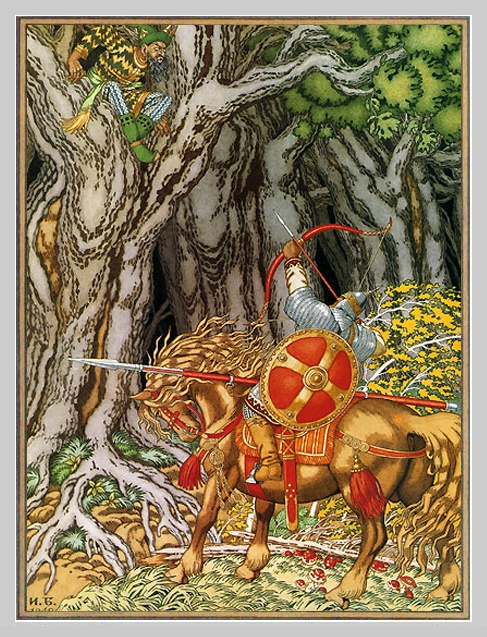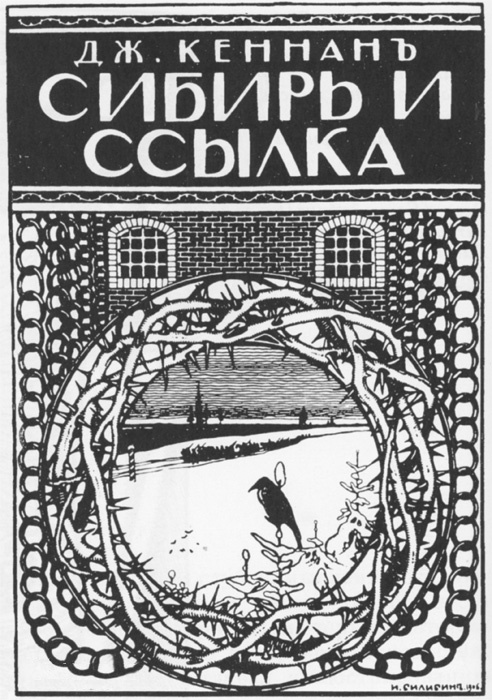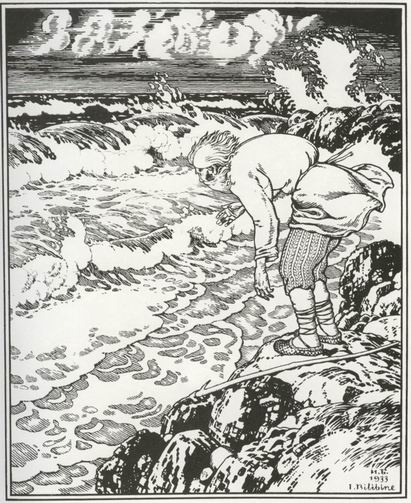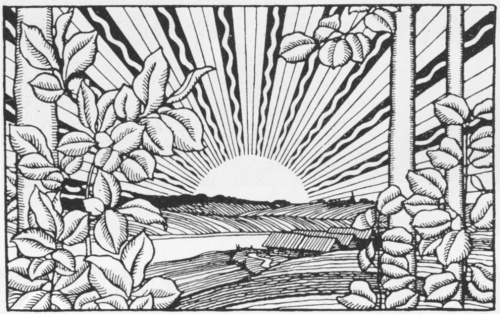Artist Ivan Yakovlevich Bilibin (Ivan Bilibin) (138 works)
Разрешение картинок от 450x213px до 1605x2346px
Artist Ivan Yakovlevich Bilibin 08/16/1876-02/07/1942
Since childhood, we have become acquainted with the work of Ivan Bilibin, entering the colorful world of fairy tales, which was created by the artistic imagination of the Master. Many of his works have entered our lives so deeply that their origin seems truly folk, going back centuries.
He made illustrations for Russian folk tales “The Frog Princess”, “The Feather of Finist-Yasna Falcon”, “Vasilisa the Beautiful”, “Marya Morevna”, “Sister Alyonushka and Brother Ivanushka”, “White Duck”, and for the fairy tales of A.S. Pushkin - “The Tale of Tsar Saltan” (1904-1905), “The Tale of the Golden Cockerel” (1906-1907), “The Tale of the Fisherman and the Fish” (1939) and many others.
Editions of fairy tales are of the type of small, large-format notebooks. From the very beginning, Bilibin's books were distinguished by their patterned designs and bright decorativeness. The artist did not create individual illustrations, he strove for an ensemble: he drew the cover, illustrations, ornamental decorations, font - he stylized everything to resemble an old manuscript.
The names of the fairy tales are written in Slavic script. To read, you need to look closely at the intricate design of the letters. Like many graphic artists, Bilibin worked on decorative type. He knew the fonts of different eras well, especially the Old Russian ustav and semi-ustav. For all six books, Bilibin draws the same cover, on which there are Russian fairy-tale characters: three heroes, the bird Sirin, the Serpent-Gorynych, the hut of Baba Yaga. All page illustrations are surrounded by ornamental frames, like rustic windows with carved frames. They are not only decorative, but also have content that continues the main illustration. In the fairy tale “Vasilisa the Beautiful,” the illustration with the Red Horseman (sun) is surrounded by flowers, and the Black Horseman (night) is surrounded by mythical birds with human heads. The illustration with Baba Yaga's hut is surrounded by a frame with toadstools (what else could be next to Baba Yaga?). But the most important thing for Bilibin was the atmosphere of Russian antiquity, epic, fairy tale. From authentic ornaments and details, he created a half-real, half-fantastic world.
Ornament was a favorite motif of ancient Russian masters and the main feature of the art of that time. These are embroidered tablecloths, towels, painted wooden and pottery, houses with carved frames and piers. In his illustrations, Bilibin used sketches of peasant buildings, utensils, and clothing made in the village of Yegny.
I. Ya. Bilibin developed a system of graphic techniques that made it possible to combine illustrations and design in one style, subordinating them to the plane of the book page. Characteristic features of the Bilibin style: the beauty of patterned designs, exquisite decorative color combinations, subtle visual embodiment of the world, a combination of bright fabulousness with a sense of folk humor, etc.
The artist strove for an ensemble solution. He emphasized the flatness of the book page with a contour line, lack of lighting, coloristic unity, conventional division of space into plans and the combination of different points of view in the composition.
The process of I. Ya. Bilibin’s graphic drawing was reminiscent of the work of an engraver. Having sketched a sketch on paper, he clarified the composition in all details on tracing paper, and then translated it onto whatman paper. After this, using a kolinsky brush with a cut end, likening it to a chisel, I drew a clear wire outline with ink along the pencil drawing. In his mature period of creativity, Bilibin abandoned the use of the pen, which he sometimes resorted to in his early illustrations. For his impeccable firmness of line, his comrades jokingly nicknamed him “Ivan the Steady Hand.”
In I. Ya. Bilibin’s illustrations of 1900-1910, the composition, as a rule, unfolds parallel to the plane of the sheet. Large figures appear in majestic, frozen poses. The conditional division of space into plans and the combination of different points of view in one composition make it possible to maintain flatness. Lighting completely disappears, color becomes more conventional, the unpainted surface of the paper plays an important role, the way of marking a contour line becomes more complicated, and a strict system of strokes and dots takes shape.
The further development of the Bilibin style is that in later illustrations the artist moved from popular print techniques to the principles of ancient Russian painting: the colors become more sonorous and richer, but the boundaries between them are now marked not by a black wire outline, but by tonal thickening and a thin colored line. The colors appear radiant, but retain locality and flatness, and the image sometimes resembles cloisonne enamel.
Bilibin's passion for ancient Russian art was reflected in the illustrations for Pushkin's fairy tales, which he created after a trip to the North in 1905–1908. Work on fairy tales was preceded by the creation of sets and costumes for Rimsky-Korsakov’s operas “The Tale of the Golden Cockerel” and “The Tale of Tsar Saltan” by A.S. Pushkin. The luxurious royal chambers are completely covered with patterns, paintings, and decorations. Here the ornament so abundantly covers the floor, ceiling, walls, clothes of the king and boyars that everything turns into a kind of unsteady vision,
existing in a special illusory world and ready to disappear any moment.
“The Tale of Tsar Saltan” was illustrated by I. Bilibin first. Here is the page where Tsar Saltan overhears the conversation of three girls. It’s night outside, the moon is shining, the king hurries to the porch, falling into the snow. There is nothing fairytale-like about this scene. And yet the spirit of the fairy tale is present. The hut is a real one, a peasant one, with small windows and an elegant porch. And in the distance there is a tented church. In the 17th century Such churches were built throughout Rus'. And the king’s fur coat is real. In ancient times, such fur coats were made from velvet and brocade brought from Greece, Turkey, Iran, and Italy.
And here is a drawing where the king receives shipbuilders. In the foreground, the king sits on the throne, and the guests bow before him. We can see them all. The scenes of receiving guests and feasts are very decorative and rich in motifs of Russian ornament.
A leaf with a barrel floating on the sea is reminiscent of Hokusai's famous "Wave".
“The Tale of the Golden Cockerel” was the most successful for the artist. Bilibin combined the satirical content of the fairy tale with the Russian popular print into a single whole.
Pushkin's fairy tales were a huge success. The Russian Museum of Alexander III bought illustrations for “The Tale of Tsar Saltan”, and the entire illustrated cycle “Tales of the Golden Cockerel” was acquired by the Tretyakov Gallery.
And we should thank the storyteller Bilibin for the fact that the double-headed eagle depicted on the coat of arms of the Central Bank of the Russian Federation, on ruble coins and paper bills does not look like an ominous imperial bird, but like a fairy-tale, magical creature. And in the picture gallery of paper money of modern Russia, on the ten-ruble “Krasnoyarsk” bill, the Bilibin tradition is clearly visible: a vertical patterned path with a forest ornament - such frames edged Bilibin’s drawings on the themes of Russian folk tales. By the way, collaborating with the financial authorities of Tsarist Russia, Bilibin transferred the copyright to many of his graphic designs to the Gosznak factory.
In St. Petersburg, on Okhta, there is the famous Polustrovo mineral water plant. And once upon a time there was another production facility in its place. It was called “Joint Stock Company Beer and Mead Brewery “New Bavaria”. There was also simply “Bavaria” in St. Petersburg, and in general there were many breweries. But this one was a honey brewery. And, as it turned out, I didn’t make advertising pictures for them anyone, but Ivan Yakovlevich Bilibin.
Bilibin was the first artist to directly create a children's book, which is based on the most popular type of literature - a folk tale. The subject matter, the large circulation, the clear, accessible visual language of the illustrations, the “festive” nature of the design - all indicate that Bilibin’s books were intended for an extremely wide range of readers. Moreover, the artist’s special merit was that he did not make any discounts “for accessibility.” His books carry that “noble luxury of publications”, which previously belonged only to “rich” books for the elite. Bilibin was the first of the World of Art students to apply his extensive experience in publishing highly artistic books to work on a children's book. Other artists would soon follow his example, in particular Alexandre Benois, who created “ABC”.
Materials from Pavel Poluyan were used in the text accompaniment
Additional information on the author and his works is in the archive (drawings, costume designs, illustrations for fairy tales and autobiographical information).
This publication was born as a continuation of the GRAFOMAN X news “Vedic Rus'” in November 2008, which featured Bilibin’s works without ornament. Users were asked to post works in the true execution of the author. Please do not judge strictly the quality of the information posted, since the pictures are not perfect. I just wanted to return once again to the work of the great artist and remember my childhood and the miracle of the fairy tales that he illustrated and which we read with pleasure.
I would like to thank my son Dmitry for his help in creating the news.
